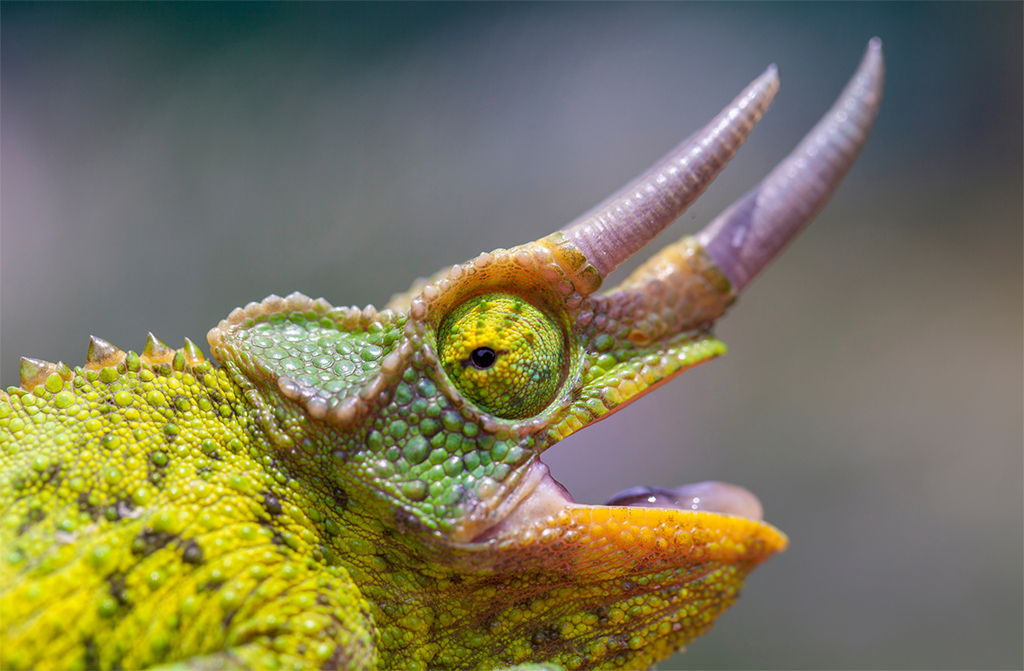
From chameleons the size of house cats to those smaller than the head of a match, custom colours are central to the Chamaeleonidae family survival strategy. How did they come to evolve this kaleidoscopic capacity? Escapees from the 1970s pet trade may hold some of the answers…
Chameleons can modify their skin colour thanks to specialised skin cells and a combination of different pigments. As relatively slow movers, they rely on camouflage and muted browns and greens to stay hidden from potential predators (and to sneak up on prey).
They do not however have the magical ability to match the colour of their backgrounds, and their talent for expressing bright colours has more to do with impressing potential mates and intimidating rivals. Thus, chameleon ancestors walked a delicate tightrope between flamboyant breeding displays and avoiding the unwanted attentions of those looking to hunt them.
In 1972, 36 Jackson’s chameleons (Trioceros jacksonii xantholophus) – native to Kenya and Tanzania – were brought onto the Hawaiian island of Oahu, destined for a life as pets. They arrived somewhat bedraggled and sunlight-deprived and were placed outside for some invigorating fresh air, at which point they promptly escaped. Fifty years later, Jackson’s chameleons have established themselves as an invasive species in Hawaii. A lack of snakes and avian predators made the islands a chameleon paradise, which is where evolutionary research comes in.


When two male Jackson’s chameleons size each other up in the wild, they display a lurid yellow-green colour. But when presented with a predator, they adopt a far more subtle and camouflaged approach.
Researchers wanted to test if 50 years’ worth of a carefree, largely predator-less existence would mean that the Hawaiian Jackson’s chameleons had more elaborate or brighter displays. To do this, the scientists exposed both Kenyan and Hawaiian chameleons to rival male and female chameleons, as well as fake models of predators. The colour changes were measured using an optic spectrometer.
The Hawaiian chameleons proved far more uninhibited than their Kenyan relatives, flaunting significantly brighter displays of colour across a greater spectrum when presented with rivals and females. They also stood out against the native Hawaiian vegetation even when faced with predators, particularly snakes.

It would be a stretch to conclude that the lucky Hawaiian immigrants have evolved in only 50 years. Instead, this is more likely an example of biological plasticity (adaption to local environmental factors) – a snapshot of the ultimate evolutionary process in action. In this case, a lack of danger brought sexual competitiveness to the forefront of a biological arms race.
Further reading
To learn more about these fascinating creatures, read 6 must-know facts about chameleons.
Reference:
Whiting M.J., Holland B.S., Keogh J.S., Noble D.W.A., Rankin K.J., and Stuart-Fox D., “Invasive chameleons released from predation display more conspicuous colors”, ScienceAdvances, (2022), 8:19
To comment on this story: Login (or sign up) to our app here - it's a troll-free safe place 🙂.![]()








